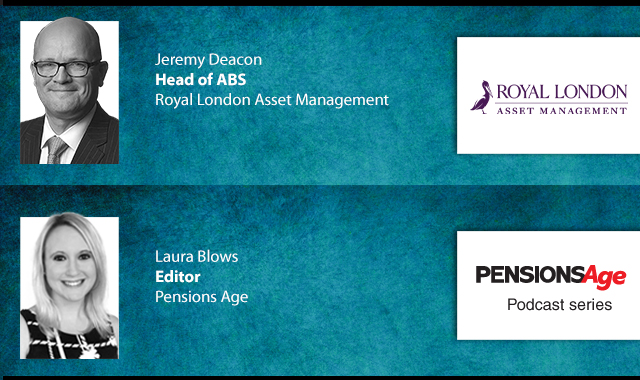Roughly 11,000 members of Kodak Pension Plan (No.2) (KPP2) have officially entered the Pension Protection Fund (PPF) assessment period, the largest claim on the lifeboat to date, it has revealed.
Speaking to Pension Age, PPF panel manager, Helen Beckinsale confirmed that the trustees of the defined benefit pension scheme, which has a deficit of £1.5bn, had been in negotiation with the PPF for the past eight months.
Members were first informed that the scheme was likely to enter the PPF in September 2018 in an autumn update from the fund, but Pensions Age has learnt that KPP2 officially entered the lifeboat’s assessment period on Monday 25 March.
A PPF spokesperson added: “We can confirm that the Kodak Pension Plan (No. 2) has now entered PPF assessment. Members can be reassured that their benefits remain protected by us throughout this assessment period.”
The PPF assessment period can take up to two years, and will determine what protection of benefits members are likely to receive.
In documents seen exclusively by Pensions Age, members under 63 years of age will see a 10 per cent reduction in their pension, however members with larger pension pots could see their pension reduced further due to a cap.
Members over KPP2's normal pension age of 63 will not see their pensions reduced, but future increases may be smaller than in the would have been otherwise.
A spokesperson for the trustees of the KPP2 said: “In the winter newsletter published in December 2018, the Trustees of KPP2 informed members that the move into the PPF was “inevitable” and that the process was expected to commence by 31 March 2019.
"Following a period of negotiation between the trustees, the PPF and TPR, KPP2 formally entered the PPF assessment period on 25 March 2019.”
Speaking at the Pensions Age Spring Conference yesterday, Beckinsale added that the assessment period would have transitionally taken four years, can now be managed in two.
KPP2 was formed after Kodak Limited’s parent company, Eastman Kodak, filed for bankruptcy in 2012, with the company no longer able to sponsor the original pension scheme.
At the time members were given the choice to switch to KPP2 or transfer into the PPF.
In the scheme’s autumn update, the trustees explained that members who had the choice of moving into the PPF or switching to KPP2 in 2013, are better off for being in KPP2, despite it now moving into the PPF.
“Some members have benefitted from an uplift to their benefits, others from higher pension increases. If we now move into the PPF, members will get pensions that are as good or better than the pension they would be getting if they’d move into the PPF in 2013,” the autumn update stated.
The trustees acquired a number of businesses from Eastman Kodak, grouped under the name of Kodak Alaris. As a result, the scheme’s sponsoring employer is a special purpose company with no trading assets, with Kodak Alaris instead being an asset of the scheme.
Despite the UK scheme entering the PPF, Kodak Alaris continues to support a number of smaller DB schemes in Germany and around the world. The smaller DB global schemes are not related to the KPP2 scheme, which is the sole shareholder of Kodak Alaris, whereas Kodak Alaris is the sponsoring employer of the smaller DB schemes.
Following the revelations of the scheme potentially entering the PPF last September, The Pensions Regulator admitted it needs to make changes to its approach, after Work and Pensions Committee chair, Frank Field, questioned TPR’s role.
Commenting, a TPR spokesperson said: "We have worked closely with the trustees to achieve the optimal outcome for members and we believe now is the right time for an orderly entry of KPP2 into the PPF.
"Approving the RAA was the right thing to do. The alternative was insolvency of the employer and what was likely to be a minimal cash return for the scheme. In order to mitigate the risks to the PPF from the successor scheme, detailed monitoring and governance arrangements were put in place.”
Latest News
-
Minimal changes expected to AS TM1; final UK Stewardship Code guidance shared
-
Low earners face 'double-edged' pension challenge
-
LGPS Central AUM to top £100m as six funds confirm plans to join
-
Blog: Delivering a pension treat, not trick
-
FCA review highlights need for effective management in push for consolidation
-
This week in pensions: 27-31 October 2025
Private markets – a growing presence within UK DC
Laura Blows discusses the role of private market investment within DC schemes with Aviva Director of Investments, Maiyuresh Rajah
The DB pension landscape
Pensions Age speaks to BlackRock managing director and head of its DB relationship management team, Andrew Reid, about the DB pensions landscape
Podcast: Who matters most in pensions?

In the latest Pensions Age podcast, Francesca Fabrizi speaks to Capita Pension Solutions global practice leader & chief revenue officer, Stuart Heatley, about who matters most in pensions and how to best meet their needs
Podcast: A look at asset-backed securities

Royal London Asset Management head of ABS, Jeremy Deacon, chats about asset-backed securities (ABS) in our latest Pensions Age podcast
© 2019 Perspective Publishing Privacy & Cookies










Recent Stories